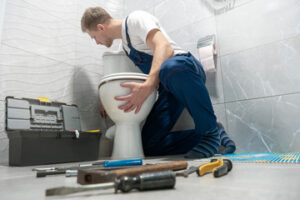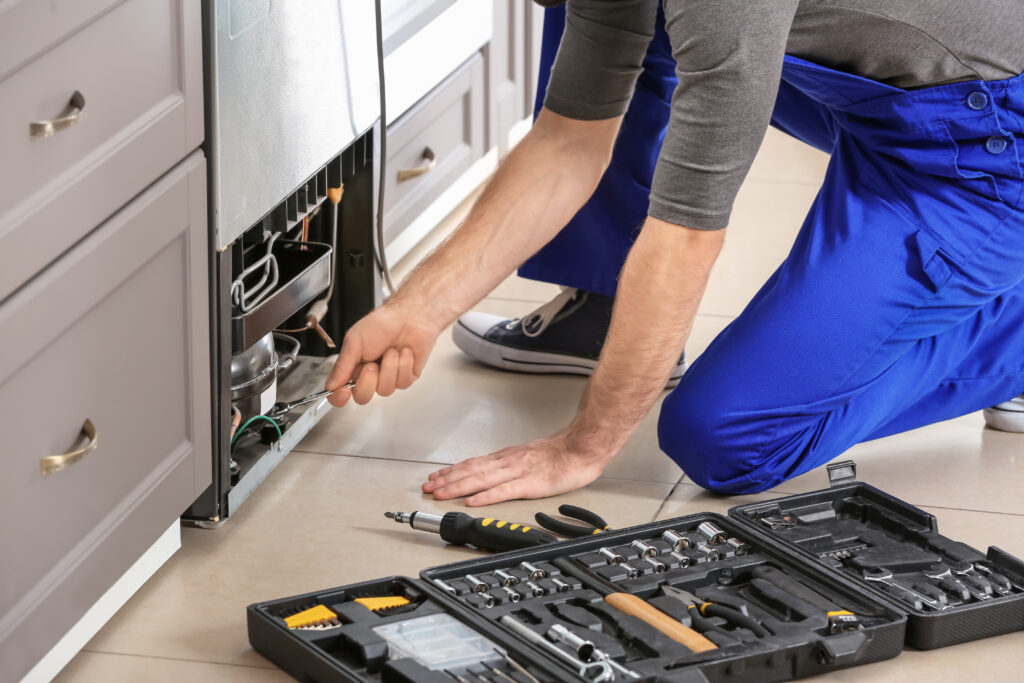Chimney Sweep Pasadena, MD are trained to diagnose and repair chimney hazards and offer maintenance services. They can help prevent carbon monoxide poisoning by ensuring that your fireplace is functioning correctly.
Until this type of child labor was outlawed children were often sold into chimney sweeping. This often led to stunted growth and even death from their harsh working conditions.

When choosing a chimney sweep, consider one who is certified by the Chimney Safety Institute of America (CSIA). These experts have extensive training and are qualified to recognize problems that could lead to chimney fires. An experienced chimney sweep will also clean your fireplace and inspect it for cracks, gaps, excessive corbeling, and smoke chamber issues. During the cleaning process, they will remove creosote and other accumulated debris from the chimney’s flue and lining.
Chimney sweeps will use brushes with rotating heads to scrape off the gunk and ash that builds up in the chimney over time. This will reduce the chances of a chimney fire. It will also make the chimney more efficient, which will prevent harmful gases from entering the home. They will also check the chimney cap for proper function and repair any cracks or damage to the structure.
Before your chimney sweep arrives, prepare for the work by moving any furniture and other decorations away from the fireplace. They will need access to the sweeping hatch, which is often located on top of the chimney stack. They may also need to remove the chimney cover if they’re going to be sweeping the inside of the chimney.
The chimney sweep will set up a drop cloth or plastic around the fireplace and attach a HEPA vacuum to keep the air clean as they brush. This is necessary so that ash and other debris does not fall into the fireplace and on your furniture or flooring. They will also wear dust masks to protect themselves from the toxic debris.
A chimney sweep will also clean out the soot hatch, which is where soot collects to be swept off the outside of the chimney. This is a very dangerous job, so it was once performed by young children who were trained to climb into the small and narrow spaces. The children were also paid a nominal salary and provided with food and clothing by the master sweep. Chimney sweeps today use modern tools to perform this dangerous job safely and efficiently.
Inspection
When chimneys and flue systems are working properly, they help to safely expel gases and smoke produced by combustion. However, over time, a number of issues can arise, including the buildup of creosote and other flammable substances that can clog the chimney. This can prevent proper ventilation, and it can also lead to a chimney fire or even structural damage. Having a professional chimney sweep regularly clean and inspect your chimney can keep it in good condition and prevent these dangerous issues.
When choosing a chimney sweep, make sure they are certified by the Chimney Safety Institute of America (CSIA). They should also provide you with information about their services and prices. Many chimney sweeps offer a variety of cleaning and inspection packages, and the price will depend on the level of service you need. Typically, a Level 1 inspection will cost less than a Level 2 inspection.
In order to conduct a thorough inspection, chimney sweeps need access to the interior of the chimney and its flue. This means that they may need to go inside the house or up on the roof. While doing this, they should be equipped with special tools to ensure that all areas are inspected. If they do need to enter your home, they should take precautions such as wearing protective clothing and covering any surfaces that are not to be impacted by the work they are doing.
A Level 2 inspection includes everything that is in a Level 1 inspection but additionally includes the accessible portions of attics, crawl spaces and basements. This will include checking for proper clearances from combustibles and other structures. It should also include a performance test such as a smoke or pressure test.
If animals such as birds, squirrels or bats have been nesting in your chimney, this will be a reason for a Level 3 inspection. These creatures can cause serious damage to the chimney and can also pose a health threat to your family.
A professional chimney sweep will be able to identify these types of problems and can recommend wildlife removal services for you. They will leave you with either a written or electronic report detailing their findings. They will always err on the side of caution and should never try to sell you something that is not necessary.
Safety
During your chimney sweep’s visit, they will lay down drop cloths or plastic and use a shop vac to decrease the amount of dust that enters your home. They will also put on a face mask to prevent particles from entering their lungs. This will ensure that they are working safely, and protecting themselves and your family from the hazardous fumes produced during the cleaning process.
Chimney sweeps are trained to spot issues with your fireplace that could lead to fire hazards. They will look for flammable debris buildups, animal nesting, and any obstructions that may be hindering air flow through your chimney. During the inspection, they will also check for masonry damage and cracks. This is a very important step to take before winter arrives, as damaged masonry can result in chimney collapse, which can be dangerous and costly.
Keeping your fireplace in good condition will reduce the risk of chimney fires and carbon monoxide poisoning. A properly functioning chimney will allow for a smoother, faster, and more efficient burn of your wood or gas based fire. It will also reduce creosote buildup, which can clog your chimney and cause it to overheat. It is recommended that you have your chimney inspected and cleaned at least once per year, even if you don’t use it often.
A well-maintained chimney will also help to keep the inside of your home warmer and more comfortable. A chimney that is blocked or obstructed by leaves, twigs, animals, and other debris will prevent proper airflow through the fireplace, which can cause dangerous fumes to back up into your living space. Chimney sweeps can remove any blockages and prevent future ones by scheduling regular sweepings.
There is a reason why old European folklore states that if you see a Chimney Sweep on your wedding day, you will have tremendous luck throughout your marriage. The job is a difficult and dangerous one that requires years of training and experience to do correctly. In 1875, after many pleas to improve their working conditions fell on deaf ears, the Chimney Sweepers Act was finally passed, requiring that sweeps have formal qualifications and meet minimum age requirements.
Maintenance
Chimney sweeps use a variety of tools to clean chimneys and fireplace flue pipes. They also inspect a chimney for safety and code violations. They may advise on fire prevention measures and provide a quote for any needed repairs. Chimney sweeps follow specific guidelines and procedures to ensure a professional job.
Chimney cleaning is essential for reducing fire hazards, carbon monoxide poisoning, improving heating efficiency and extending the lifespan of the chimney and fireplace. During a chimney cleaning, a sweeping company will use specialized brushes to remove soot and creosote from the interior of the fireplace, chimney, smoke chamber, and firebox. They will also clear the chimney of debris and check for any animal nests that have accumulated over time. They can also install a new chimney cap or spark arrestor to prevent soot fires and other harmful gases from entering the home.
In the past, boys as young as four were employed by chimney sweeps to climb inside hot chimneys and scrape away soot. These children could fall or get jammed in the narrow chimneys and were prone to soot-related illnesses, including soot pneumonia and soot lung. Acts of Parliament eventually restricted and then abolished this dangerous work. The chimney sweeps themselves were often ill from the soot and dust as well. They were prone to soot-related diseases, such as chimney sweep’s carcinoma, which caused disfiguring scarring of the face and body.
A chimney sweep must have a high level of knowledge about chimney and fireplace safety to correctly perform their duties. They should be CSIA-certified to be able to offer the best advice for the safety of their clients and to maintain the proper working condition of the chimney and fireplace system.
Prior to the arrival of a chimney sweep, a homeowner should prepare the area by clearing out the fireplace area and moving any furniture or decorations. They should also put down a drop cloth or plastic to minimize soot spillage. They should also be sure that the chimney is accessible, putting down a ladder to reach the top and bottom of the chimney.








